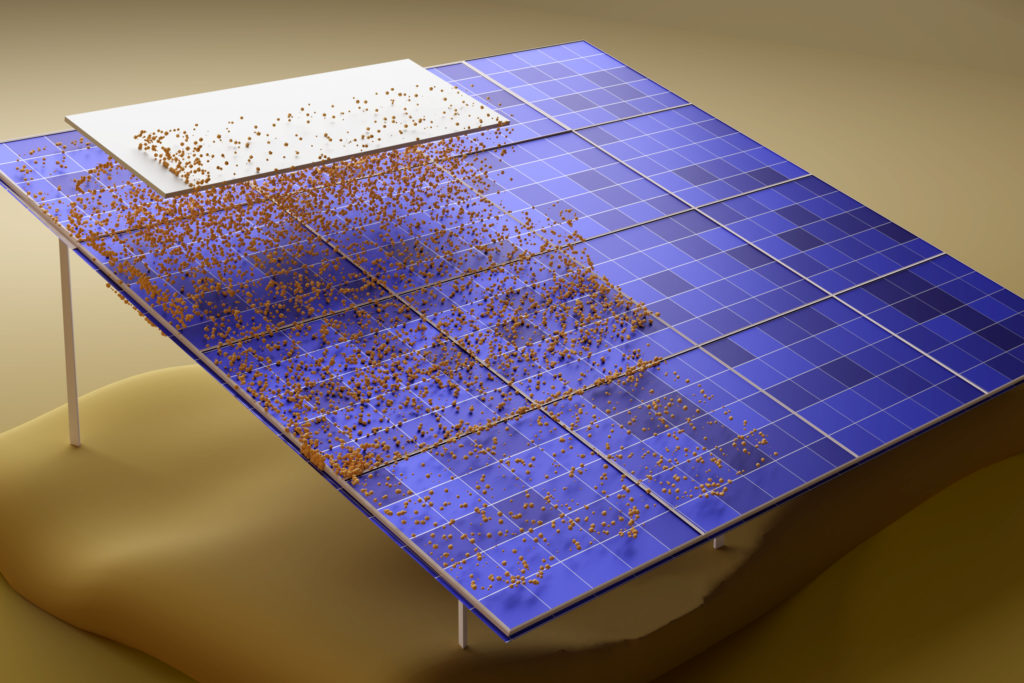
A team of researchers at Massachusetts Institute of Technology (MIT) has developed a waterless and contactless solution which it says can clean the dust off solar panels without compromising the panels efficiency.
The project, led by MIT graduate student Sreedath Panat and mechanical engineering professor Kripa Varanasi, has produced a solution that uses an electric field, created by an electrode passing over the panels, to give a charge to dust particles. A subsequent opposite charge then repels particles from the surface.
Unlock unlimited access for 12 whole months of distinctive global analysis
Photovoltaics International is now included.
- Regular insight and analysis of the industry’s biggest developments
- In-depth interviews with the industry’s leading figures
- Unlimited digital access to the PV Tech Power journal catalogue
- Unlimited digital access to the Photovoltaics International journal catalogue
- Access to more than 1,000 technical papers
- Discounts on Solar Media’s portfolio of events, in-person and virtual
Or continue reading this article for free
The researchers explained how water cleaning could make up to 10% of the operational cost of a solar plant and their technology would allow to reduce those costs while improving the power output by augmenting the cleaning frequency.
With many large utility-scale solar panels located in desert areas, the researchers said this solution would help clean the accumulation of sand dust in solar panels that causes a decrease of output of up to 30%.
Varanasi noted how a “mundane problem” like dust accumulation on solar panels can create a substantial loss. According to MIT’s assessments, only a 3-4% reduction could already cost around US$3.3-5.5 billion globally.
“There is so much work going on in solar materials,” Varanasi said, “They’re pushing the boundaries, trying to gain a few percent here and there in improving the efficiency, and here you have something that can obliterate all of that right away.”
The system was assessed using samples of dust of differing sizes prepared by the laboratory, demonstrating how the process would work on a lab-scale test installation. The experiments were conducted at varying humidities from 5 – 95% and indicated success in environments with humidity of at least 30%.
Panat said: “As long as the ambient humidity is greater than 30 percent, you can remove almost all of the particles from the surface, but as humidity decreases, it becomes harder.” Varanasi added that most deserts are actually in that range of humidity.
In countries like India, where the increase of solar installations coupled with water supply constraints will be helpful to offer a waterless solution that could afford millions of gallons of water every year and save in operational costs altogether.
Varanasi said that the industry had to be careful and thoughtful about how to make a sustainable solution, “The water footprint of the solar industry is mind boggling,” he added.
